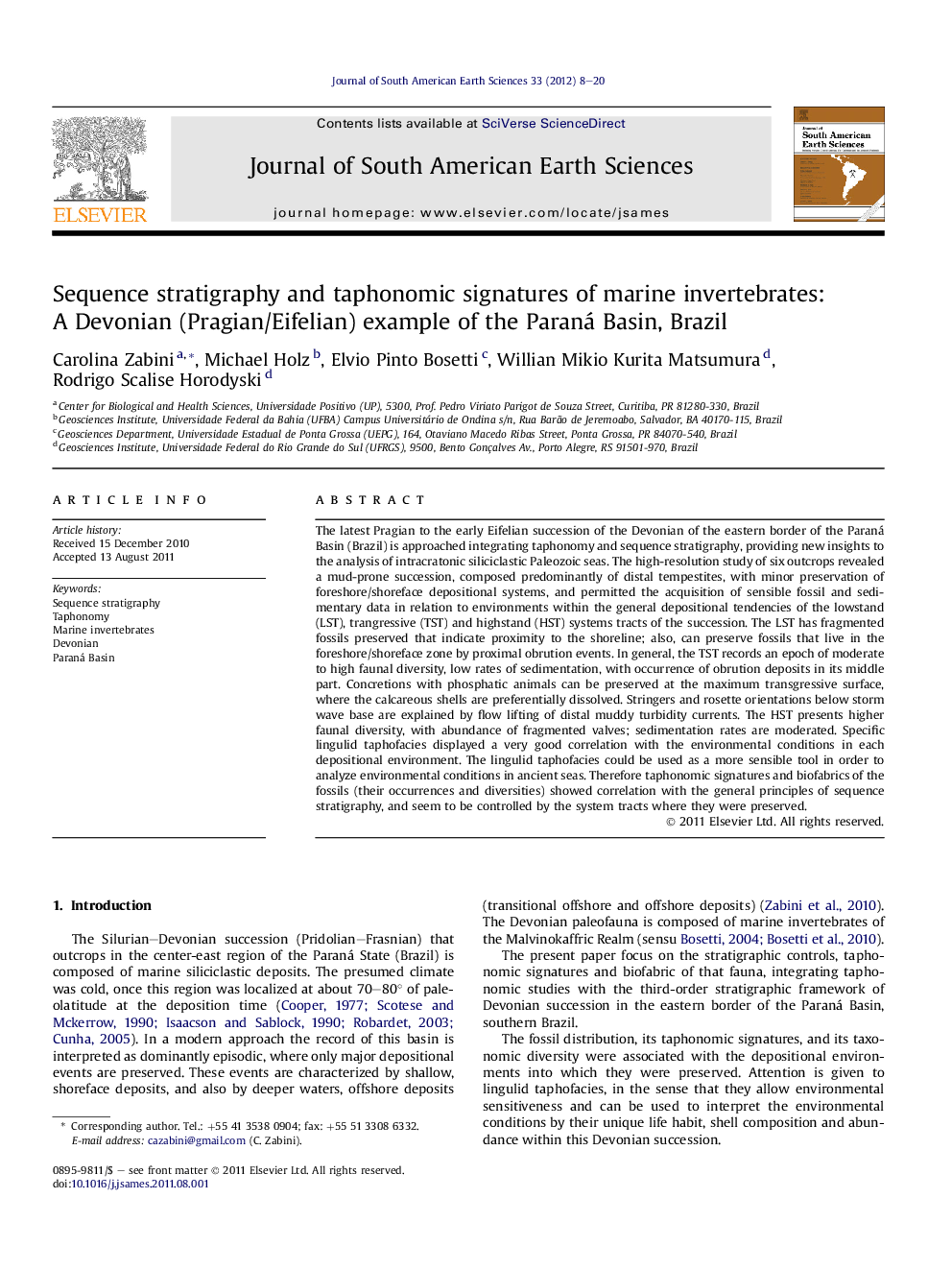| کد مقاله | کد نشریه | سال انتشار | مقاله انگلیسی | نسخه تمام متن |
|---|---|---|---|---|
| 4682561 | 1348925 | 2012 | 13 صفحه PDF | دانلود رایگان |

The latest Pragian to the early Eifelian succession of the Devonian of the eastern border of the Paraná Basin (Brazil) is approached integrating taphonomy and sequence stratigraphy, providing new insights to the analysis of intracratonic siliciclastic Paleozoic seas. The high-resolution study of six outcrops revealed a mud-prone succession, composed predominantly of distal tempestites, with minor preservation of foreshore/shoreface depositional systems, and permitted the acquisition of sensible fossil and sedimentary data in relation to environments within the general depositional tendencies of the lowstand (LST), trangressive (TST) and highstand (HST) systems tracts of the succession. The LST has fragmented fossils preserved that indicate proximity to the shoreline; also, can preserve fossils that live in the foreshore/shoreface zone by proximal obrution events. In general, the TST records an epoch of moderate to high faunal diversity, low rates of sedimentation, with occurrence of obrution deposits in its middle part. Concretions with phosphatic animals can be preserved at the maximum transgressive surface, where the calcareous shells are preferentially dissolved. Stringers and rosette orientations below storm wave base are explained by flow lifting of distal muddy turbidity currents. The HST presents higher faunal diversity, with abundance of fragmented valves; sedimentation rates are moderated. Specific lingulid taphofacies displayed a very good correlation with the environmental conditions in each depositional environment. The lingulid taphofacies could be used as a more sensible tool in order to analyze environmental conditions in ancient seas. Therefore taphonomic signatures and biofabrics of the fossils (their occurrences and diversities) showed correlation with the general principles of sequence stratigraphy, and seem to be controlled by the system tracts where they were preserved.
► Sequence stratigraphy and taphonomy in the study of Devonian invertebrates.
► Predominant distal tempestites, and minor foreshore/shoreface systems.
► Taphonomic signatures correlated to environment tendencies of the LST, TST, and HST.
► Stringers and rosette valves placed by flow lifting of distal turbidity currents.
► Lingulid taphofacies as sensible tool to environmental conditions in ancient seas.
Journal: Journal of South American Earth Sciences - Volume 33, Issue 1, February 2012, Pages 8–20